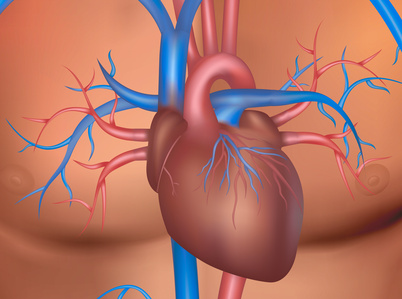Current surgical and medical treatment options for severe tricuspid regurgitation are extremely limited. However, this historically forgotten valve seems to have the option of transcatheter repair, nowadays. This observational study assessed the safety and feasibility of the MitraClip system for patients with severe chronic tricuspid regurgitation. All patients presented severe tricuspid regurgitation and…
Post TAVR thrombosis, is it more common than we know?
Courtesy of Dr. Carlos Fava Few post TAVR scenarios remain to be analyzed. One of them is post TAVR valve thrombosis. This event has been reported in around 0.5% of cases, but its incidence, consequences and adequate treatment remain unclear. The study analyzed 642 patients undergoing TAVR. Patients were followed up with Doppler Echocardiography…
Peripheral artery disease associated to ischemic and bleeding events after DES implantation
Patients with peripheral artery disease (PAD) have higher rates of cardiovascular events after DES implantation, which could be explained partly by higher platelet reactivity. The present work studies the relationship between platelet reactivity and clinical events after PCI in patients with and without a history of peripheral artery disease. The ADAPT-DES study (Assessment of…
Promising outcomes for DEB in long femoropopliteal artery lesions
Courtesy of Dr. Carlos Fava. For type A and B femoropopliteal artery lesions, percutaneous transluminal angioplasty (PTA) with balloon has proven beneficial; however, drug-eluting balloons (DEB) have shown superiority as regards restenosis. Some studies have reported favorable outcomes for DEB in type C and D lesions, but its real benefit is still unclear. This study prospectively…
Bioresorbable scaffolds with drug-eluting stents: do they entail a higher thrombosis risk?
Courtesy of Dr. Leiva. Bioresorbable scaffolds with drug-eluting stents (bioresorbable vascular scaffolds, BVS) have been added to the list of endovascular treatment options for coronary disease. The ABSORB III trial showed the non-inferiority of this stent type to everolimus-eluting metallic stents as regards target-lesion revascularization (TLR) at one year. However, reports have suggested a higher…
Proximal anterior descending artery angioplasty: what are its long-term outcomes?
Courtesy of Dr. Javier Castro. Certain coronary lesions have been historically discouraged for endovascular treatment. Among these can be found left main coronary artery lesions, multivessel disease, and proximal anterior descending artery lesions. As a matter of fact, the latter is actually considered separately as a criterion for choosing the revascularization method. Endovascular treatment of…
Diastolic Dysfunction: Shall We Begin to Assess It?
Courtesy of Dr. Carlos Fava. The association between diastolic dysfunction (DD) and aortic insufficiency (AI) after transcatheter aortic valve replacement (TAVR) has not been studied yet, but the presence of aortic regurgitation has proved to be associated with worse outcomes. A total of 144 out of 195 patients who underwent TAVR with balloon-expandable SAPIENS or SAPIENS XT…
Catheter-directed thrombolysis for pulmonary embolism: a safe technique
Courtesy of Dr. Brian Nazareth Donato. The conventional treatment for patients with pulmonary embolism (PE) has traditionally been anticoagulation plus systemic thrombolytics, or surgical embolectomy, reserved for high risk patients. Even though it has been shown systemic thrombolytics reduce mortality in PE patients at high or intermediate risk, its use has been limited given the…
Cardiovascular MR Perfusion Imaging: Good Initial Alternative in Stable Chronic Angina
In the initial management of patients with stable chronic angina, a non-invasive strategy with cardiovascular MR perfusion imaging seems to provide similar results to invasive strategies. At one year, MACE rate (combination of all cause death, non-fatal infarction and target vessel revascularization) resulted 3.3% for MRI vs. 3.9% for fractional flow reserve (FFR) informed…
Closing off the Appendage While Performing Cardiac Surgery Results in a Reduction in Risk of Embolic Stroke
Closing off the left appendage as an add-on procedure while performing other cardiac surgery in patients with atrial fibrillation resulted in a reduction in risk of embolic stroke of nearly 40% over 12 months, according to an analysis carried out on the Society of Thoracic Surgeons (STS) database. Patients who had surgical appendage occlusion had…









